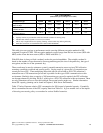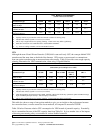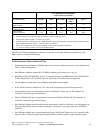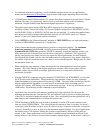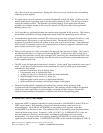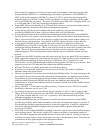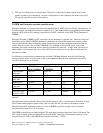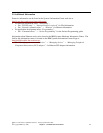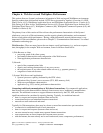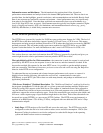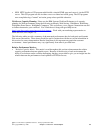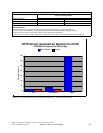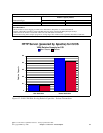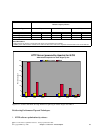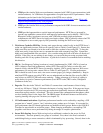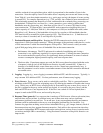
Chapter 6. Web Server and WebSphere Performance
This section discusses System i performance information in Web serving and WebSphere environments.
Specific products that are discussed include: HTTP Server (powered by Apache) (in section 6.1), PHP -
Zend Core for i (6.2), WebSphere Application Server and WebSphere Application Server - Express (6.3),
Web Facing (6.4), Host Access Transformation Services (6.5), System Application Server Instance (6.6),
WebSphere Portal Server (6.7), WebSphere Commerce (6.8), WebSphere Commerce Payments (6.9), and
Connect for iSeries (6.10).
The primary focus of this section will be to discuss the performance characteristics of the System i
platform as a server in a Web environment, provide capacity planning information, and recommend
actions to help achieve high performance. Having a high-performance network infrastructure is very
important for Web environments; please refer to Chapter 5, “Communications Performance” for related
information and tuning tips.
Web Overview: There are many factors that can impact overall performance (e.g., end-user response
time, throughput) in the complex Web environment, some of which are listed below:
1) Web Browser or client
y processing speed of the client system
y performance characteristics and configuration of the Web browser
y client application performance characteristics
2) Network
y speed of the communications links
y capacity and caching characteristics of any proxy servers
y the responsiveness of any other related remote servers (e.g., payment gateways)
y congestion of network resources
3) System i Web Server and Applications
y System i processor capacity (indicated by the CPW value)
y utilization of key System i server resources (CPU, IOP, memory, disk)
y Web server performance characteristics
y application (e.g., CGI, servlet) performance characteristics
Comparing traditional communications to Web-based transactions: For commercial applications,
data accesses across the Internet differs distinctly from accesses across 'traditional' communications
networks. The additional resources to support Internet transactions by the CPU, IOP, and line are
significant and must be considered in capacity planning. Typically, in a traditional network:
y there is a request and response (between client and server)
y connections/sessions are maintained between transactions
y networks are well-understood and tuned
Typically for Web transactions, there may be a dozen or more line transmissions per transaction:
y a connection is established/closed for each transaction
y there is a request and response (between client and server)
y one user transaction may contain many separate Internet transactions
y secure transactions are more frequent and consume more resource
y with the Internet, the network may not be well-understood (route, components, performance)
IBM i 6.1 Performance Capabilities Reference - January/April/October 2008
© Copyright IBM Corp. 2008 Chapter 6 - Web Server and WebSphere 78



